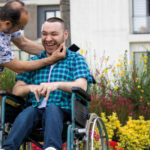AdoptionThe British Association for Adoption and Fostering defines adoption as follows:
“Adoption is a way of providing a new family for children who cannot be brought up by their own parents. It’s a legal procedure in which all the parental responsibility is transferred to the adopters. Once an adoption order has been granted it can’t be reversed except in extremely rare circumstances. An adopted child loses all legal ties with their first mother and father (the “birth parents”) and becomes a full member of the new family, usually taking the family’s name.”
Latest Adoption jobs
• Adoption has a higher profile within councils following the prime minister’s adoption review in 2000, according to the Commission for Social Care Inspection.
• CSCI says numbers of looked-after children in England being adopted rose 38 per cent between 2000 and 2005 and that a more diverse range of those seeking children for adoption are now being recruited.
• The quality of adoption practice is “still very variable across and within local councils,” says CSCI in its 2006 review of the sector. The study found that adoption agencies placed 3,100 children for adoption in England in 2005 and their average age was four. CSCI noted that there are 150 local council and 33 voluntary adoption agencies in England
• Adoption law for domestic adoption and intercountry adoption was modernised in the Adoption and Children Act 2002 (fully implemented December 2005). Special guardianship, introduced in the 2002 act, aims to provide permanence for children if adoption is not appropriate.
• In Scotland, the executive’s own figures show that over the last 20 years, adoptions fell from around 1,000 a year to less than 400.
Fostering
BAAf defines fostering as follows:
“Fostering is a way of providing a family life for children who cannot live with their own parents. It is often used to provide temporary care while parents get help sorting out problems, take a break, or to help children or young people through a difficult period in their lives.
Often children will return home once the problems that caused them to come into foster care have been resolved and that it is clear that their parents are able to look after them safely.
Others may stay in long-term foster care, some may be adopted, and others will move on to live independently.”
• Two out of three children who come into care in the UK are fostered, according to the Fostering Network charity. It says 50,000 children are currently in foster care, and that 10,000 more carers interested in fostering a child are needed.
Latest fostering jobs
Community Care Conferences
Improving educational outcomes for looked-after children – Working towards a national model
Adoption and Fostering providers
Adoption providers from Community Care’s purchasing care directory
Fostering providers from Community Care’s purchasing care directory
Latest articles from Community Care
Recent Community Care articles on adoption and fostering
Wales tackles crisis culture in looked-after children
Adoption agencies claim they are being marginalised
Register sees big rise in placements
Shake-up for Northern Ireland’s adoption service
Review of attachment handbook for foster care and adoption
Scotland’s adoption bill
Care Matters green paper analysed



 Bournemouth, Christchurch and Poole
Bournemouth, Christchurch and Poole  Hampshire County Council
Hampshire County Council  Oxfordshire County Council
Oxfordshire County Council  South Gloucestershire Council
South Gloucestershire Council  Wokingham Borough Council
Wokingham Borough Council  Providing a lifeline for social workers who want to get back into the sector
Providing a lifeline for social workers who want to get back into the sector  The highs and lows of a children’s services’ transformation journey
The highs and lows of a children’s services’ transformation journey  Embedding learning in social work teams through a multi-agency approach
Embedding learning in social work teams through a multi-agency approach  The family safeguarding approach: 5 years on
The family safeguarding approach: 5 years on  Harnessing social work values to shape your career pathway
Harnessing social work values to shape your career pathway  Workforce Insights – showcasing a selection of the sector’s top recruiters
Workforce Insights – showcasing a selection of the sector’s top recruiters  Join our team to help technology enabled care transform lives in Nottinghamshire
Join our team to help technology enabled care transform lives in Nottinghamshire 

 Facebook
Facebook X
X LinkedIn
LinkedIn Instagram
Instagram
Comments are closed.